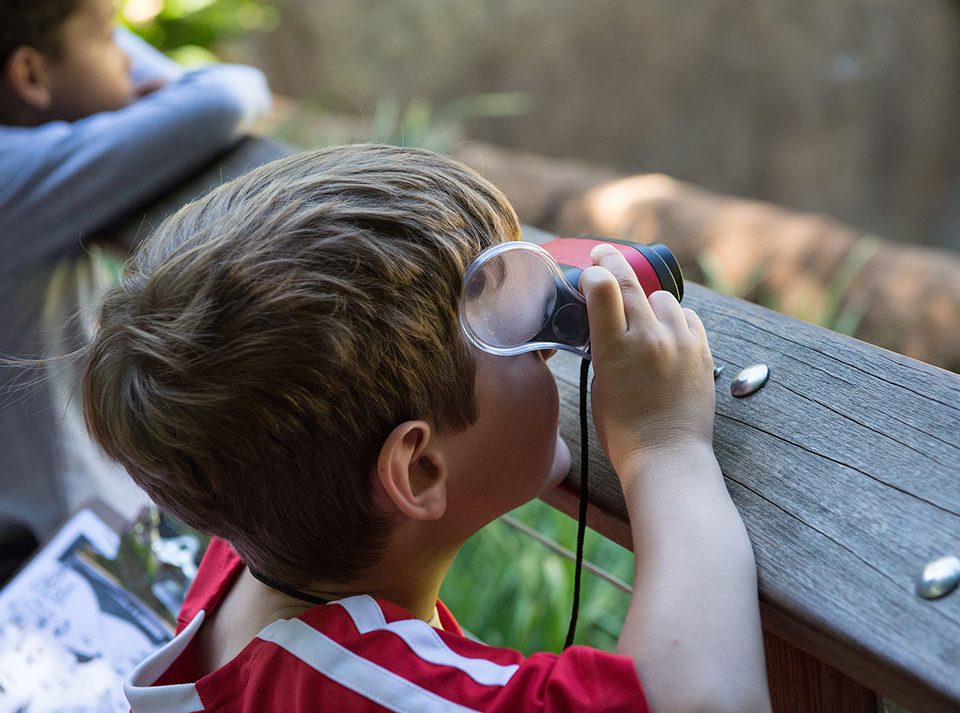Explore Your Zoo: #SavingSpecies

Donor Focus: The Ivanjack Family
January 1, 2018
Educational Adventure: “Look Closer” at Nature’s Small, Illuminating Details
January 1, 2018
Starting this month, we’re launching a new Zooscape feature aptly called “Explore,” with fascinating facts and insider hacks to help you make the most of your Zoo experience and membership.
Our first piece focuses on threatened and endangered species – some of which you likely know well, like the western lowland gorilla, and some of which may be new discoveries for you, like the Chacoan peccary or the Fiji banded iguana. Your membership supports efforts to save these and other species around the globe.
With your help, the L.A. Zoo is a conservation leader that commits expertise, technology, and funds to help save animals every day. As you peruse this list and plan your next trip to the Zoo, know that your role in this important work is greatly appreciated.
1. Armenian Viper
- STATUS: Near Threatened. Armenian viper populations have declined by 80 percent since 1975—largely the result of habitat destruction and over-collection for the exotic pet trade.
- CONSERVATION PROJECT: Both the L.A. and Saint Louis Zoos are partners in the Association of Zoos and Aquariums’ Species Survival Program (SSP) for this pit viper, which is notoriously difficult to reproduce in captivity. In July 2015, two female Armenian vipers gave birth to a total of eight babies—a first for the L.A. Zoo. More Armenian viper births occurred during an unprecedented snake baby boom in the summer and fall of 2017, during which we welcomed 61 rare and endangered snakes, including other viper species such as black-tailed horned vipers and European nose-horned vipers.
2. Komodo Dragon
- STATUS: Vulnerable. Although wild populations are stable at this time, the world’s largest lizards are found only on a tiny group of Indonesian islands. Habitat loss, natural disasters, and rising sea levels due to climate change are potential threats.
- CONSERVATION PROJECT: The Komodo Survival Program monitors wild Komodo populations and encourages local communities to become involved in finding sustainable practices that help humans and dragons to share habitat.
3. Chacoan Peccary
- STATUS: Endangered. This pig-like animal is found only in a small region of Paraguay known as the Chaco. Hunting and habitat loss due to ranching and agriculture have led to the peccary’s disappearance from large areas of its range.
- CONSERVATION PROJECT: Chaco Center for Conservation and Research (CCCI) works to restore parts of Chacoan peccary habitat and studies remaining wild populations.
4. Peninsular Pronghorn
- STATUS: Critically Endangered. Once numbering in the thousands, only about 250 remain in the wild.
- CONSERVATION PROJECT: The Peninsular Pronghorn Recovery Project, established in 2000, maintains captive breeding centers in Baja California, Mexico and coordinates assurance populations at the L.A. Zoo and other U.S. institutions. Although still fewer than they once were, peninsular pronghorn have been reintroduced to parts of their historic range where they had not been seen for decades.
5. Western Lowland Gorilla
- STATUS: Critically Endangered. A major threat to wild gorilla populations is habitat loss due to unsustainable mining for minerals used in consumer electronics.
- CONSERVATION PROJECT: In addition to supporting the Gorilla Rehabilitation and Conservation Education Center (GRACE), which is focused on eastern lowland or Grauer’s gorillas, the Zoo participates in environmentally friendly electronics recycling in order to reduce mining in fragile gorilla habitats. You can help by recycling your unwanted handheld electronic devices at the L.A. Zoo. Prep your devices for recycling with the help of our handy checklist, then bring them to the Zoo and deposit them in the ECO-CELL bin in Entry Plaza or give them to a Membership Ambassador.
6. Asian Elephant
- STATUS: Endangered. Asian elephants face many threats, including poachers, habitat loss and degradation, and conflict with humans.
- CONSERVATION PROJECTS: The Biodiversity and Elephant Conservation Trust (BECT) and Wild Earth Allies are working to protect Asian elephants and their habitat. They study the remaining wild populations and find non-lethal ways for farmers to protect their crops from hungry elephants.
7. Madagascar Radiated Tortoise
- STATUS: Critically Endangered. Without concerted intervention, these beautiful reptiles may become extinct within 50 years.
- CONSERVATION PROJECT: In 2016, the Turtle Survival Alliance opened the Tortoise Conservation Center in Madagascar. The TCC will serve as a central hub for the TSA’s Confiscation to Reintroduction Strategy, in which confiscated tortoises will be treated and returned to health, and then reintroduced into secure community-protected habitats.
8. Jaguar
- STATUS: Near Threatened. Rainforest habitat loss continues to put pressure on wild populations.
- CONSERVATION PROJECT: Through research, education, and outreach, Paso Pacifico helps local communities in Mexico and Nicaragua learn how to coexist with jaguars.
9. Harpy Eagle
- STATUS: Near Threatened. Populations are on the decline due to deforestation and hunting.
- CONSERVATION PROJECT: In addition to establishing a captive breeding program in 1989, the Peregrine Fund carried out an extensive education campaign designed to teach people that harpy eagles aren’t dangerous to humans, and that they should be protected. This helped to change attitudes to such a degree that, in 2002, Panama declared the harpy eagle its national bird.
All classifications are according to the International Union for Conservation of Nature (IUCN).




